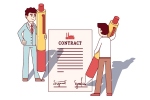 Credit cards do not take very long to pile up debts on us. It is therefore of utmost importance to keep the usage of credit cards under control. For those who are already entangled in Credit Card Bankruptcy debts and are not in any condition to repay the debts, here are a few handy tips to get rid of this situation legally.
Credit cards do not take very long to pile up debts on us. It is therefore of utmost importance to keep the usage of credit cards under control. For those who are already entangled in Credit Card Bankruptcy debts and are not in any condition to repay the debts, here are a few handy tips to get rid of this situation legally.
- DMP’s – Debt Management Plans
This is basically a mutual agreement between you and your bank or credit card Company for the repayment plans. It is usually proposed and decided according to your income, expenses, rates of interest on your credit card and of course the balances. There are various financial consultants and advisors who need to be contacted and they would provide every possible solution based on the case.
- Consolidation of Debt
This is one of the simplest and commonly followed ways to get rid of Credit Card debts. In this case, one takes a loan to repay the existing pending debts. It might seem awkward to take loans to repay existing loans, but if it is well planned and financially logical then it really does the job. It has to be calculated according to ones monthly income and the extent to which that person can return the loan and it does best to overcome the bankruptcy debt.
- Settlement of Debt
This is another interesting way to get you out of legal debts. It has several other names by which it is identified: Debt negotiation, Credit reduction, Debt arbitration. As the names suggest, this involves a mutual discussion between the debtor and the creditors regarding reduction of the debt by possible amounts. It is basically an attempt to shrink the debt amount by whatever is possible so that the debtor can pay it back to the creditors. Once decided, the creditors cannot ask for more since it is a completely legal procedure.
- Discharge
In this, the bankrupt debtor is relieved and excused to repay any of the debt payments to any of the creditors. Thus if a debtor selects the option of Complete discharge, then he is not to pay anything to any of the creditors as per legal laws and is considered “insolvent” i.e. not at all being in a condition to even attempt to repay the debts.
- Relief
It can get no better if one gets some relief on the debts that he/she has to pay. This option allows fixtures of relaxations on the pending debts, or allowing some reliefs on it with the consent of the creditors. It depends on the financial conditions of the debtors, and other legal factors involved. It can either be a complete relief from all the debts or partial. These factors are observed by the court of law, who decides ultimately how much relief can be provided to the debtor.
Thus it is very well clear that though these are relief tips, but it is never good to get bankrupted or be under debts. It is also recommended that before taking any kind of loans or cash in credit from any organization like banks, it is more than compulsory to be aware of all the details like payback time, interest rates applied, and if at all you can repay that loan back?
As it is always said, precaution is better than cure. Avoid debts, but if in case you are under it just choose any of the above mentioned options to get yourself out of it.
About Author: This is a guest post submitted by Meenakshi Aggarwaon behalf of Funding Grants Australia.























